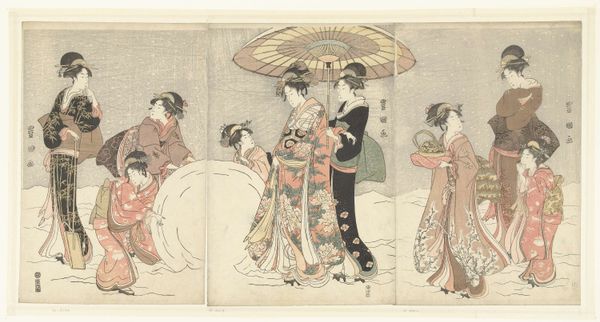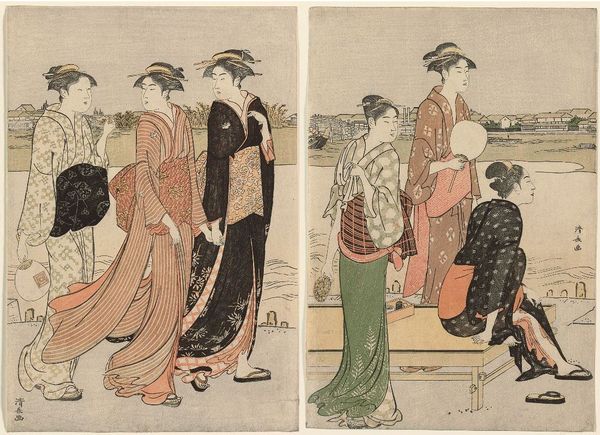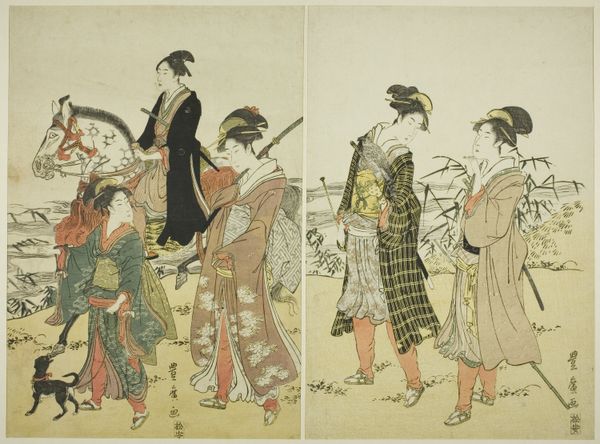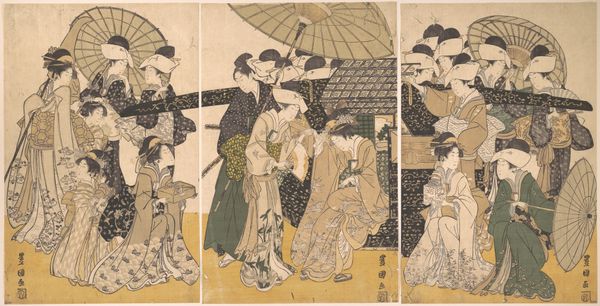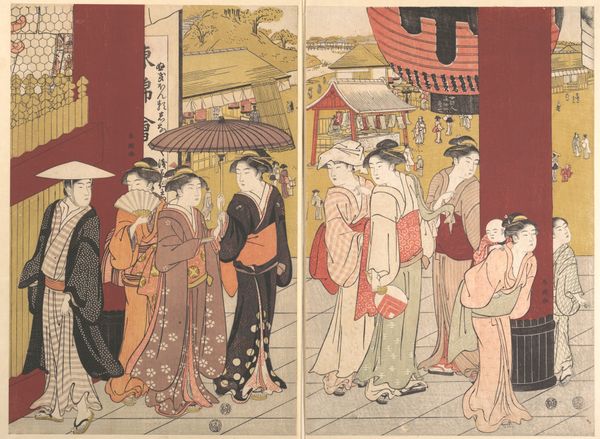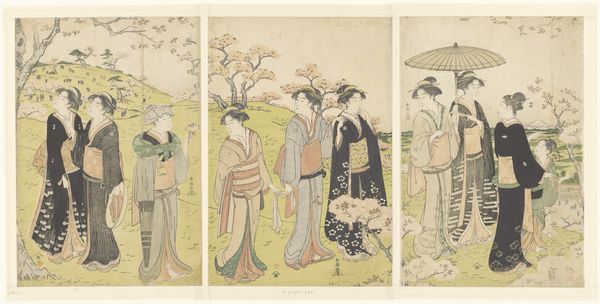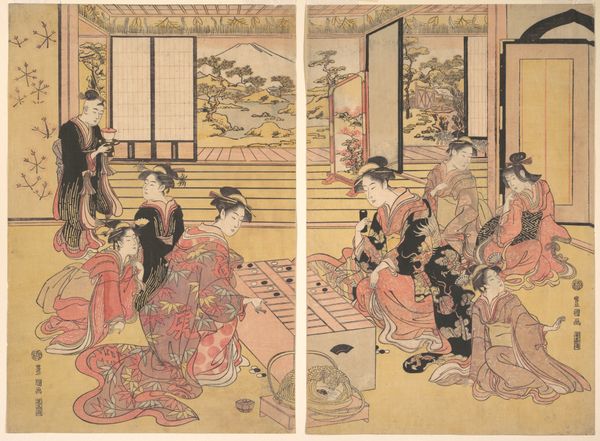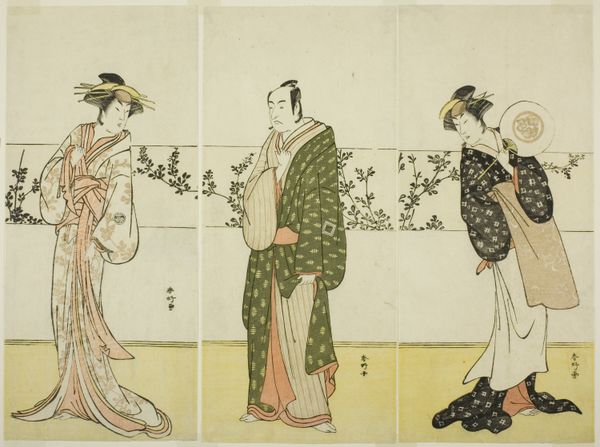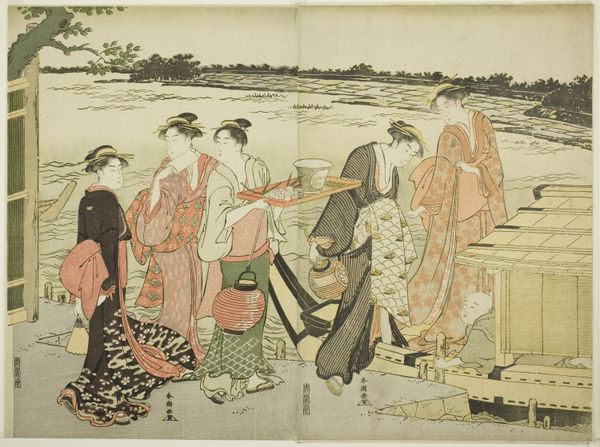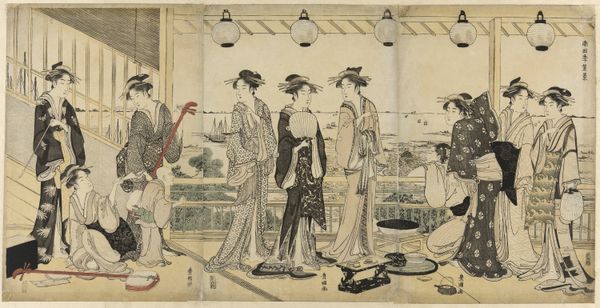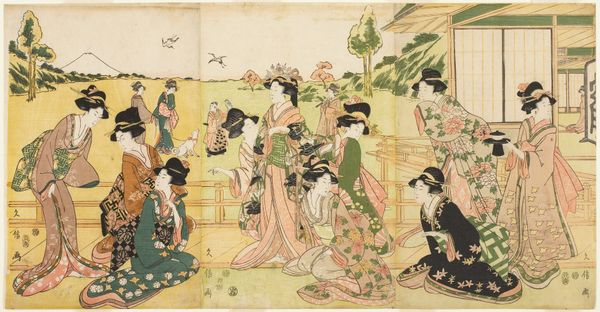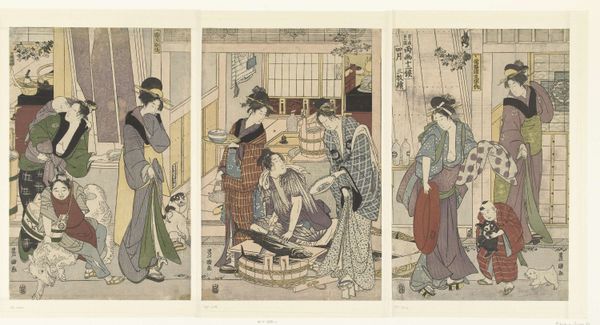![The Four Seasons in Southern Edo: A Summer Scene (Minami shiki; Natsu [no] kei) by Utagawa Toyokuni I](/_next/image?url=https%3A%2F%2Fd2w8kbdekdi1gv.cloudfront.net%2FeyJidWNrZXQiOiAiYXJ0ZXJhLWltYWdlcy1idWNrZXQiLCAia2V5IjogImFydHdvcmtzLzE2OTJmZTNlLWQ4NWQtNDMxOS1hODFkLTc4ODM2ZDg3N2RiMy8xNjkyZmUzZS1kODVkLTQzMTktYTgxZC03ODgzNmQ4NzdkYjNfZnVsbC5qcGciLCAiZWRpdHMiOiB7InJlc2l6ZSI6IHsid2lkdGgiOiAxOTIwLCAiaGVpZ2h0IjogMTkyMCwgImZpdCI6ICJpbnNpZGUifX19&w=3840&q=75)
The Four Seasons in Southern Edo: A Summer Scene (Minami shiki; Natsu [no] kei) 1787 - 1789
0:00
0:00
print, woodblock-print
#
portrait
# print
#
asian-art
#
ukiyo-e
#
personal sketchbook
#
woodblock-print
#
genre-painting
Dimensions: Image (a): 14 3/8 x 10 1/8 in. (36.5 x 25.7 cm) Image (b): 14 1/2 x 9 15/16 in. (36.8 x 25.2 cm)
Copyright: Public Domain
Editor: This diptych, "The Four Seasons in Southern Edo: A Summer Scene," created by Utagawa Toyokuni I around 1787-1789, is a beautiful woodblock print. I'm struck by how much social life is packed into the image. What story do you think it is telling us? Curator: This print, belonging to the Ukiyo-e tradition, provides a window into the lives of women and the leisure activities of the Edo period. It makes me think about what their existences were beyond these scenes of apparent rest, and how their social mobility was constrained in ways which reflected then reinforced gender roles. How does it make *you* think about class and gender, looking at this work? Editor: It's true, they're beautiful but seem so contained! The tea ceremony, the elaborate kimonos... Is this purely a celebratory scene, or is there a critical aspect to Toyokuni's depiction? Curator: It's both, I think. While it romanticizes aspects of life in Edo, we also have to consider it within the broader context of Ukiyo-e prints. These works often reflected a burgeoning merchant class, and also acted as subtle critiques of social structures. Who has access to such leisure? And at what cost? Where is the working class represented, by contrast? Editor: So it is less about the individual women, and more about the society they represent? Curator: Precisely. By examining the details—the garments, the setting, the subtle interactions—we can unpack a wealth of information about the era's social and political dynamics. Even those little teacups hint at complex trading networks. Editor: That’s a really interesting way to think about what seems to be merely aesthetic and sentimental on the surface! I see how much it can be opened up and critiqued, viewed through a new lens. Curator: Exactly. Hopefully, these details enrich your reading and deepen your appreciation of the piece.
Comments
No comments
Be the first to comment and join the conversation on the ultimate creative platform.
